but at this disjuncture we know what is what
Kevin Beasley
Banu Cennetoğlu
John Greyson
Amy Ching-Yan Lam
Ghislaine Leung
Sara Leydon
Mahshid Rafiei
curated by Jacob Korczynski
27 May - 9 July 2023
Cuttings of text and image come together to form Sara Leydon’s Baroness de Lancinena (1990) and Alice Kyteler (1990). Each a reference to a woman either identified or accused of practicing witchcraft, these two collages are part of a series first shown in a 1990 solo exhibition titled Conviction at Artspeak. Their history in this city is considerable, living long-term in the collection of Christos Dikeakos. Of the seven artists gathered here, Leydon is the only one to have lived and worked on the unceded traditional territory of the xʷməθkʷəy̓əm (Musqueam), Sḵwx̱wú7mesh (Squamish), and səlilwətaɬ (Tsleil-Waututh) Nations upon which this exhibition is also hosted.
Befitting their eponymous titles, these collages foreground a lone female figure amongst their assembly of segments. The history of the Baroness of Lancinena can be traced to a single reference located in the pages of Jules Michelet’s study of witchcraft La Sorcière (1862), while the life of Alice Kyteler remains more deeply documented across multiple sources. While speculation about the end of her life abounds, the official records end with her flight for freedom prior to her sentencing.
With no evidence of capture, death, or other traces of a life beyond, Kyteler remains fugitive, her actions a continuous process against force imposed. Elusion ad infinitum.
“Constant escape is an ode to impurity, an obliteration of the last word.”1
This quote is taken from the preface to Black and Blur (2017), the first part of Fred Moten’s trilogy Consent Not To Be A Single Being which was followed by Stolen Life (2018), and The Universal Machine (2018). Moten underscores escape as interstitial space, an ongoing act that opens up a third stream.
A few years later in No One’s Witness: A Monstrous Poetics (2021), Syd Zolf continues some of Moten’s thinking around acts of elusion:
“Refusal (“No”) precedes the body, the person, the “one.” Refusal of easy capture, of productive outlay, of consumable meaning.”2
but at this disjuncture we know what is what concludes an informal trilogy of group exhibitions that began with Surface Tension at Oakville Galleries a decade ago and continued with separation penetrates at Mercer Union in 2017. The first exhibition tested the persistent materiality and tactility of images and the second exhibition considered interruptions inherent to artworks understood as a caesura. This third exhibition ends with escape.
The final distich of Yvonne Rainer’s poem Labor Day Faces lends this exhibition its name. It begins by testing connections before concluding with a rupture:
The negotiations
around I am not you
become moot
at parting
a moue on one face
Keaton on the other
each wave of feeling
still roiled
from household dithering
but at this disjuncture
we know what is what3
Each of the assembled artists offer an active proposition of elusion: constant escape from confinement, constant escape from autobiography, constant escape from legibility, constant escape from artificial alignment, constant escape from a single configuration, constant escape from autonomy.
John Greyson’s 32 of 1640 Letters from Theresa Paolone (1979) is one of his earliest works, an artist’s book that preceded his videos and films for which he is best known. The fictional title character is a female alter-ego for the artist, a subject who is inherently incomplete. The publication purports to capture a cross-section of select dispatches from a lifetime of neglected correspondence: missives that sever relationships and admonish institutions.
Although handwritten notes populate some of the pages, the cumulative pleasure and pressure of the book comes from following the permutations of the form letter and the tension between the templates taken and the subjectivity they offer room for. Here, the book is presented as an exhibition copy devised specifically for this exhibition, a video which moves through the selection of the thirty-two epistles, page by page.
Banu Cennetoğlu’s practice takes distribution as material. Regardless of the medium engaged, her strategies enable an embodied access to groupings of image, text, and even combinations of colours that implicate the individual amid systems of economics, statehood, and technology.
A soft sculpture and score, IKNOWVERYWELLBUTNEVERTHELESS (2015-ongoing) is a phrase translated from psychoanalyst and author Octave Mannoni: “Je sais bien, mais quand même.” Despite the concrete framework of the quote, its exact language is adapted for each iteration, ultimately determined by the location of presentation. Helium-filled mylar balloons that may typically spell out a name, an event, or a celebratory greeting are instead assembled untethered in service of the statement. The active element pushes against their placement and the temporality inherent to every exhibition eventually combines with the chemical conditions of the individual letters. Inevitably the falling and shifting collection of characters open up to other configurations, including illegibility.
If Cennetoğlu’s approach to language enlists chance procedures and ultimately embraces its opportunities for discontinuity, Amy Ching-Yan Lam’s poetry practice is demarcated by the limit of the printed page. Taken from her recent publication Baby Book (2023), Force is the shortest of the works gathered for the collection. In the economy of a couplet held by a title that is both noun and verb, the opposite movements of upwards and downwards are embodied in two separate growth cycles. Situating the reader in the middle of a rise and fall, her poem makes tangible what comes to bear upon the work of Cennetoğlu as well as Kevin Beasley. With this poem Lam stakes out a position also taken by the viewer: between. With the current lease winding down at 2954 West 4th Avenue, the garden behind the gallery continues to grow. Long after Unit 17 leaves, processes of Force continue.
The upward effort in Cennetoğlu’s work initially appears to have its opposite in Kevin Beasley’s Bust (2011-20), a sculpture indicative of his expanded practice with polyurethane resin and garments. But just as her work both rises and falls, Bust lifts itself into a haunting form as its materiality also weighs down its surfaces, both implying and absenting a body. Most of his works appear in an upright configuration, beholding our own presence before them. Bust on the other hand is an outlier amongst Beasley’s oeuvre in that there are two different configurations that the sculpture can take. A dye-sublimated printed t-shirt combines with the extant rigidity of a motocross neck brace as well as a cervical neck collar, the latter ascribed to just the given name of Charles, thus intimating an intimacy. Like Lam’s poem, Beasley’s title is both noun and verb. Bust simultaneously suggests casting and catastrophe, underscoring the fragility of bodies against the force of industrial objects and the chemicals that constitute them.
Mahshid Rafiei’s practice enmeshes process, material, and image leaving an entanglement for the viewer to either parse out or prise apart. In many of Rafiei’s most recent works, extant objects are subject to her assembly, but with trace (2020) she offers an inversion of this appropriation with the possibility of her own object to be repurposed as a tool for reproduction.
trace like the title of works by Lam and Beasley, tethers together verb and noun. A sheet of tracing vellum folded into quadrants inscribed with a heavy layer of graphite, it also collapses distinctions between drawing and sculpture. Its title indicates its possible role in the drafting process and is also a reference to the process of its production. Graphite is a familiar medium, often offering one of the earliest opportunities for inscription. When encountering the dense composition of trace, tactile knowledge of mark making reveals the layered temporality of its production.
An assertion against autonomy, the scores of Ghislaine Leung are context-contingent as opposed to site-specific. Produced through a process of negotiation with the exhibition organizers, central to this exchange is an acknowledgement of the labour of art production required that exists with or without the artist.
This includes Toons (2019). Gloss white paint is applied to all the internal walls of the exhibiting gallery and the sheen of this dominant surface gathers reflections. Primarily these come from the lustre of overhead lighting, positioned in each space to provide an even appearance in the most unregulated of economies. But in the configuration of this curatorial proposition, a glow also pools from the proximity of Toons to IKNOWVERYWELLBUTNEVERTHELESS.
Flags (2019) is a separate score that could be seen as a companion to Toons, taking a different architectural feature of the gallery and the opposite colour as material. Gloss black paint is applied to the internal facing doors. They could signal storage or may provide access to an office. But each time they indicate a way out.
- Jacob Korczynski
1. Moten, Fred. “Preface,” in Black and Blur, Duke University Press, Durham and London, 2017, p. vii.
2. Zolf, Syd. No One’s Witness: A Monstrous Poetics, Duke University Press, Durham and London, 2021, p. 21.
3. Rainer, Yvonne, “Labor Day Faces,” in Poems, Badlands Unlimited, New York, 2011, p. 52.
Kevin Beasley lives and works in New York. His practice spans sculpture, photography, sound, and performance, while centering on materials of cultural and personal significance, from raw cotton harvested from his family’s property in Virginia to sounds gathered using contact microphones. Beasley alters, casts, and molds these diverse materials to form a body of works that acknowledge the complex, shared histories of the broader American experience, steeped in generational memories. In March 2023, Kevin Beasley released A View of a Landscape, a 300-page book and double LP record, conceived as equal elements and designed together. The publication was produced in collaboration with the Renaissance Society and The University of Chicago Press. A selection of recent exhibitions and performances include The Dirty South: Contemporary Art, Material Culture, and the Sonic Impulse, a touring exhibition curated by Valerie Cassel Oliver, which traveled from the Virginia Museum of Fine Arts, Richmond (2021); to the Contemporary Art Museum of Houston, TX (2021); Crystal Bridges Museum of American Art, Bentonville, AR (2022), and the Museum of Contemporary Art Denver, CO (2022); Prospect.5, New Orleans, LA (2021), in which Beasley realized a multiyear site-specific project in the Lower Ninth Ward; a series of outdoor performances for the Performa 2021 Biennial, New York, NY; Grief and Grievance: Art and Mourning in America, conceived by Okwui Enwezor, New Museum, New York, NY (2021); a month-long residency and solo exhibition at A4 Arts Foundation, Cape Town, South Africa (2020); and ASSEMBLY, organized by Kevin Beasley, Lumi Tan, Tim Griffin, and Nicole Kaack, The Kitchen, New York, NY (2019). In 2018–2019, Beasley transformed the eighth floor of The Whitney Museum of American Art for his first institutional solo exhibition in New York, A view of a landscape, organized by Christopher Y. Lew with Ambika Trasi, in conjunction with a series of performances. In 2017, Beasley presented Chair of the Ministers of Defense at the Hammer Museum, Los Angeles, CA a monumental installation inspired by Bernini’s Baroque altarpiece in Saint Peter’s Basilica and an infamous image of Black Panther Huey P. Newton; it later traveled to the Baltimore Museum of Art, MD and the Snite Museum of Art, University of Notre Dame, IN. Other past exhibitions include Kevin Beasley, Institute of Contemporary Art Boston, MA, organized by Ruth Erickson (2018); inHarlem: Kevin Beasley, The Studio Museum in Harlem, Morningside Park, NY (2016); Between the Ticks of the Watch, The Renaissance Society at the University of Chicago, IL (2016); and Storylines: Contemporary Art at the Guggenheim, Solomon R. Guggenheim Museum, New York, NY (2015). In 2012, Beasley performed at The Museum of Modern Art, New York, as part of Some Sweet Day, co-curated by Ralph Lemon and Jenny Schlenzka. Beasley’s work is included in the collections of the The Museum of Modern Art, NY; Art Institute of Chicago, IL; Solomon R. Guggenheim Museum, New York, NY; Dallas Museum of Art, TX; Minneapolis Institute of Art, MN; Pérez Art Museum Miami, FL; Tate Modern, London, United Kingdom; San Francisco Museum of Modern Art, CA; Institute of Contemporary Art Boston, MA; The Studio Museum in Harlem, New York, NY; Hammer Museum, Los Angeles, CA; Whitney Museum of American Art, New York, NY, and others. Beasley was born in 1985 in Lynchburg, VA. He received his BFA from The College for Creative Studies, Detroit in 2007 and his MFA from Yale University School of Art, New Haven, CT in 2012.
Banu Cennetoğlu is an Istanbul-based artist engaged in a wide range of cross-disciplinary practices. Her practice incorporates methods of archiving in order to question and challenge the politics of memory, as well as the production, distribution and consumption of information. Cennetoglu had solo exhibitions at institutions including K21 Ständehaus, Kunstsammlung Nordrhein-Westfalen, Düsseldorf; Sculpture Center, New York; Chisenhale Gallery, London; Bonner Kunstverein; Salonul de proiecte, Bucharest; Kunsthalle Basel. She has participated in the Berlin, Istanbul, Liverpool, Gwangju, Athens and Venice Biennials, as well as Manifesta 8 and documenta14. She is the founder of BAS, an artist-run space in Istanbul dedicated to artists’ books and printed matter. In 2016 she was a guest at the DAAD Artists-in-Berlin Program. Cennetoglu is currently an advisor at the Rijksakademie, Amsterdam.
John Greyson is an award-winning Toronto video/film artist. Since 1984, his many features, shorts and transmedia works use humour and song to explore such queer activist issues as police entrapment, prison, AIDS activism, global solidarity, homo-nationalism and apartheid. The winner of 4 Teddies, 4 Canadian screen awards, and Best Film Prizes in over 30 international festivals, his works include: Photo Booth (2022), International Dawn Chorus Day (2020), Mercurial (2018), Gazonto (2016), Murder in Passing (2013), Fig Trees (2009), Proteus (2003), Lilies (1996), Zero Patience (1993), The Making of Monsters (1991) and Urinal (1989). His artist’s books including Red Mittens (1979), 32 of 1640 Letters from Theresa Paolone (1979), and Breathing Through Opposing Nostrils: A Gay Espionage Thriller (1983) can be found in the Art Metropole Collection at The National Gallery of Canada, the Art Gallery of Ontario Library, and the Museum of Modern Art Library.
Amy Ching-Yan Lam is an artist and writer. From 2006 to 2020 she was part of the duo Life of a Craphead. Lam’s exhibitions, performances, and public artworks, have been presented at Seoul MediaCity Biennale, Eastside Projects, and Art Gallery of Ontario, amongst others. Her publications include the speculative fiction Looty Goes to Heaven (2022) and the poetry collection Baby Book (2023). Her exhibition a small but comfy house and maybe a dog, with HaeAhn Woo Kwon, is open at the Richmond Art Gallery, BC, from April 22 to June 11, 2023. She lives in Tkaronto/Toronto, and was born in Hong Kong.
Ghislaine Leung is a British conceptual artist. Leung has had solo exhibitions at Simian, Copenhagen, Essex Street / Maxwell Graham, New York; Ordet, Milan, Italy; Museum Abteiberg, Mönchengladbach, Germany; Cabinet, London, UK; Netwerk, Aalst, Belgium; Kunstlerhaus Stuttgart, Germany; Chisenhale, London, UK; Reading International, Reading, UK; Cell Project Space, London, UK and WIELS, Brussels, Belgium. Her work has previously been in group exhibitions at A Tale of a Tub, Rotterdam, HALLE FÜR KUNST Steiermark, Graz, The Renaissance Society, Chicago, IL; British Art Show 9, CAPC, Bordeaux, France; Kunstverein Hamburg, Hamburg, Germany; Simian, Copenhagen, Denmark; Geneva Biennale, Geneva, Switzerland; Goldsmiths CCA, London, UK; Helmhaus Zürich, Switzerland; Kunstverein für die Rheinlande und Westfalen, Düsseldorf, Germany; By Art Matters, Hangzhou, China; Museion, Bolzano, Italy; KW Institute , Berlin, Germany; Baltic Centre for Contemporary Art, Gateshead, UK; WIELS, Brussels, Belgium; Camden Art Centre, London, UK; FRAC Lorraine, Metz, France; Institute of Contemporary Arts, London, UK; Fri Art, Kunsthalle Friborg, Friborg, Switzerland and elsewhere. Leung’s first book was Partners (Cell Project Space, 2018) with her second book Bosses forthcoming in 2023 with Divided Publishing. She lives in London, UK.
Sara Leydon’s work can be found in the collections of the Burnaby Art Gallery, S.F.U. Galleries and the Government of British Columbia Provincial Collection. She studied at the University of Regina and the Emily Carr College of Art and Design and her exhibitions include Beyond Surface (1989) at the Western Front, Emergence (1991) at the Burnaby Art Gallery, Rethinking History (1992) at Mercer Union, Conviction (1990), Behind the Sign: Collaborations Between Writers and Visual Artists (1993), and Crime and Ornamentation (1994) all at Artspeak, and Beginning with the Seventies: GLUT (2018) at the Morris and Helen Belkin Art Gallery. Currently living in Alberta, she has spent the last 20 years as a school librarian.
Mahshid Rafiei (b.1992, Tehran) considers the ways a process, a material and an image can become so inextricable that they ossify projections of a prejudiced imaginary. Her work has been exhibited at 421, Abu Dhabi (2023); Fri Art Kunsthalle, Fribourg (2018); and Rheum Room, Basel (2018); among other spaces. Collaborative and discursive projects have been hosted at Mercer Union, Toronto (2020); Temporary Art Review, online (2016); and Knockdown Centre, New York (2013). She participated in March Meeting at Sharjah Art Foundation (2019) and has held residencies at Darling Foundry, Montreal (2021), 421, Abu Dhabi (2020) and Spring Sessions, Amman (2019).
Jacob Korczynski acknowledges the support of the Canada Council for the Arts

but at this disjuncture we know what is what installation view

but at this disjuncture we know what is what installation view

but at this disjuncture we know what is what installation view

but at this disjuncture we know what is what installation view

but at this disjuncture we know what is what installation view

but at this disjuncture we know what is what installation view

but at this disjuncture we know what is what installation view

Sara Leydon, Alice Kyteler, 1988, framed collage, 24.4 x 24.4cm
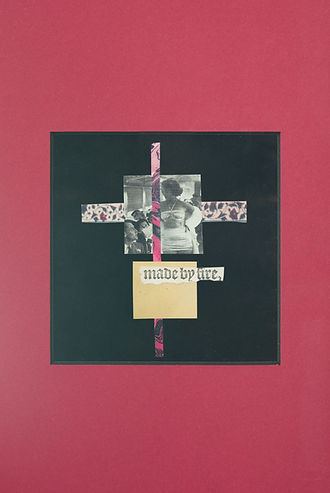
Sara Leydon, Alice Kyteler, 1988 (detail)

Sara Leydon, Baroness de Lancinena, 1988, framed collage, 24.4 x 24.4cm
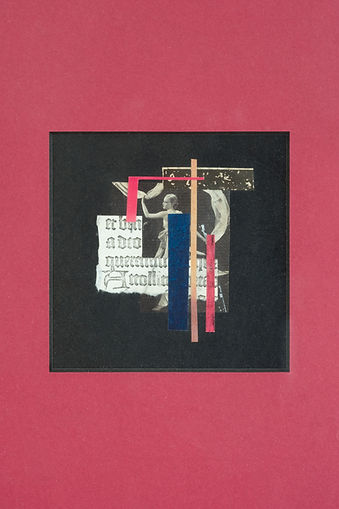
Sara Leydon, Baroness de Lancinena, 1988 (detail)

John Greyson, 32 of 1640 Letters from Theresa Paolone, 1979, digital video, loop

Banu Cennetoğlu, IKNOWVERYWELLBUTNEVERTHELESS, 2015-ongoing, mylar helium balloons filled on 26 May 2023, dimensions variable (detail) with
Ghislaine Leung, Toons, 2019, Score: All internal walls painted gloss white, edition of 3 + 2 AP (detail)

Banu Cennetoğlu, IKNOWVERYWELLBUTNEVERTHELESS, 2015-ongoing (detail)

Banu Cennetoğlu, IKNOWVERYWELLBUTNEVERTHELESS, 2015-ongoing (detail)
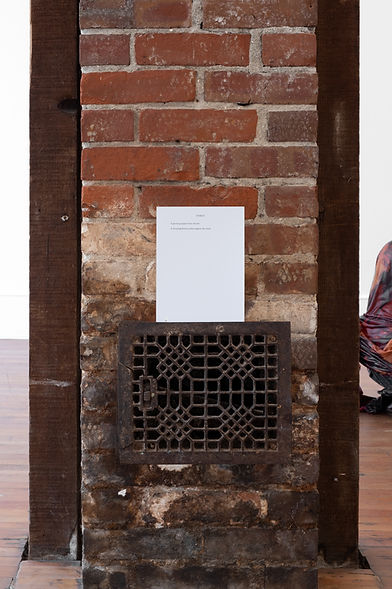
Amy Ching-Yan Lam, Force, Epson Hot Press Bright, 21.5 x 14.5cm.
From Baby Book (2023). Published by Brick Books.

Amy Ching-Yan Lam, Force, 2023

Kevin Beasley, Bust, 2011-20, polyurethane resin, dye-sublimation printed t-shirt, motocross neck brace, Charles's cervical neck collar, 57.15 x 50.8 x 60.96 cm

Kevin Beasley, Bust, 2011-20
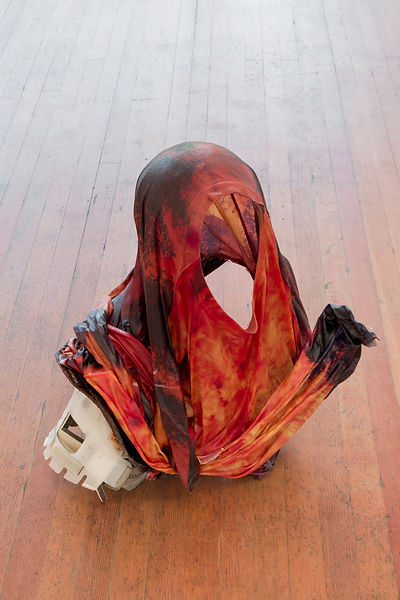
Kevin Beasley, Bust, 2011-20

Mahshid Rafiei, trace, 2020, graphite on tracing vellum, 91.5 x 120cm
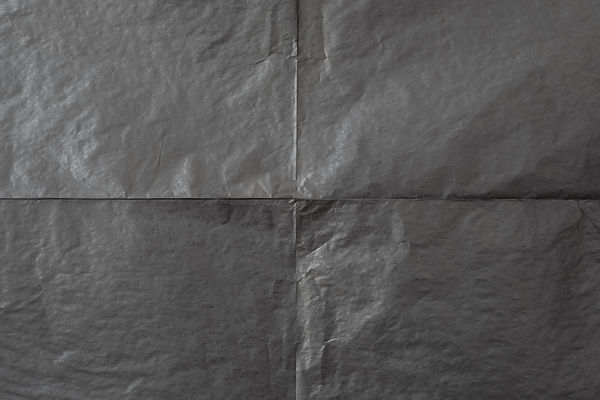
Mahshid Rafiei, trace, 2020 (detail)

Ghislaine Leung, Flags, 2019, Score: All internal doors painted gloss black, edition of 3 + 2 AP (detail)